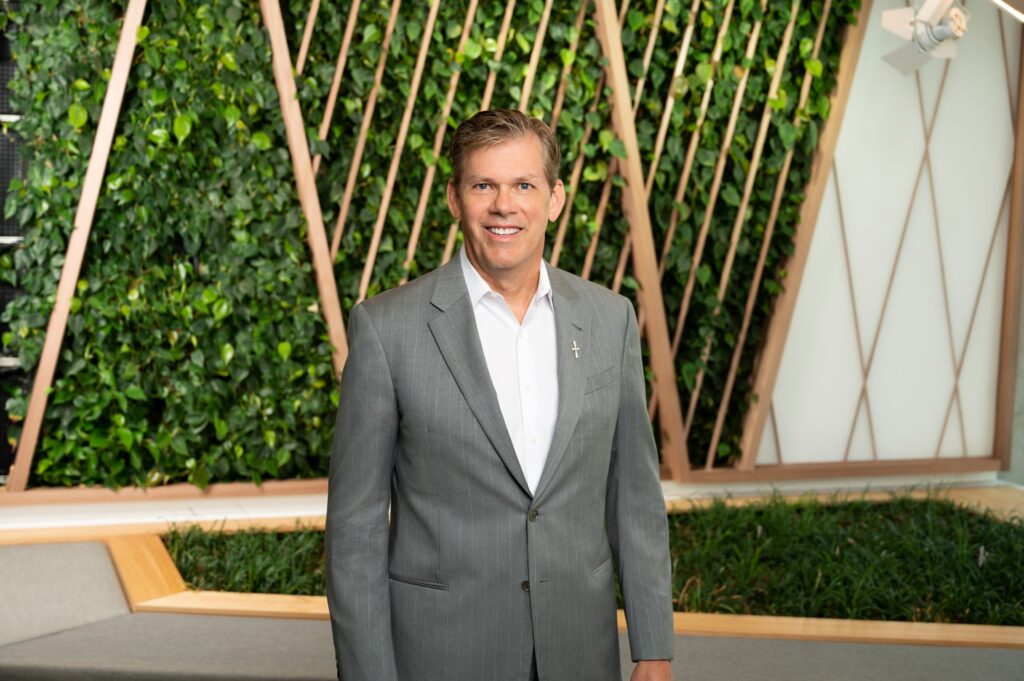CMO and CEO Alignment: An Imperative for Growth

What happens when the CEO and CMO don’t operate from a shared strategy?
As business leaders, most of us can tell in an instant if a team is fully aligned—and when it is not. When a team lacks strategic alignment, it’s obvious:
- Priorities are fuzzy.
- Communication breaks down.
- There are more questions than answers.
- Momentum is impeded.
- Financial performance suffers.
- Culture is negatively affected.
- Growth stalls.
That said, those teams that establish and maintain alignment capture lightning in a bottle. Everyone is chasing the same goals. Everyone is rowing in the same direction. Growth skyrockets. These teams have created alignment as defined by a Harvard Business Review Article by Oxford University’s Jonathan Trevor and Barry Varcoe, who describe it this way:
The ability of the leadership team to maintain connectivity between the company’s purpose (what we do and why we do it), strategy (what we are trying to win at to fulfill our purpose), capabilities (what we must be good at to win), and resources/systems (what delivers the winning performance we need).1
While misalignments can arise nearly anywhere throughout the organization, statistics show that one C-suite relationship appears to go sideways more often than others: the partnership between the CEO and CMO. For example, a global survey by the Fournaise Marketing Group revealed that 80 percent of CEOs don’t trust or are unimpressed with their CMOs—even though these same CEOs expressed overwhelming trust in CFOs and CIOs.2 Duke University also conducted a study and found that 64 percent of CEOs have no marketing experience and therefore lack a deep understanding of this discipline.3 That leads us to a final frightening statistic: CMOs have the highest turnover rate among C-suite executives among large US companies. According to analysis by Korn Ferry, on average CMOs are in their position for just 3.5 years, while CEOs average 6.9 years; CFOs, 4.7 years; and CIOs, 4.6 years.4

Simply put—lack of trust and understanding, plus constant churn in the CMO position just increases the divide between marketing leaders and their C-suite counterparts. So, the question is, how does one establish executive alignment between these two key executive roles?
The Foundation for CEO–CMO Alignment
To establish and maintain a fully aligned partnership between the CEO and CMO, a number of things must be in place. First and foremost, these two leaders must agree on the pillars outlined in the above definition of alignment:
Purpose: The CEO and CMO must not only align on the organization’s higher-level purpose, but on the purpose of marketing as well. Is it to build a powerful brand? Establish and develop growth engines? Own the end-to-end customer experience? Whatever it is, alignment on marketing’s role in the organization is essential for shared success. According to HCL’s global CMO, Matt Preschern, “Some CEOs, particularly in consumer brands, may say that they need their brand to be the most powerful brand in the world. In B2B, they often say it’s all about sales and sale enablement. As a CMO, you have to find that out and align yourself to it. Not every CEO is the same.”5
Strategy: Clearly defining the company’s go-to-market strategy and business priorities is next. These two leaders must be in lockstep when it comes to where the company is going, the steps that must be taken to get there, and the timeline for reaching the desired destination. According to C-suite advisor Martin Roll, “Both the CEO and the CMO should have a strong involvement in charting the growth path of the organization and its strategic priorities. The CEO, by the nature of the role, will have a stronger role to play in this. Thus, to a larger extent, the onus lies on him or her to give the CMO a seat at this strategic table which will also help to fuel innovation as part of the business agenda.”6
Capabilities: This step in the alignment process is absolutely critical: The CEO must clearly articulate what is expected from marketing and how he or she would like the CMO to engage with and serve other areas of the business. What must marketing do to support sales, product development, and other customer-facing parts of the business? Only when these capabilities are clearly defined can the CMO build a team that will be successful and meet the expectations of the CEO.
Resources/Systems: As marketing has become more digitally driven and technologically advanced, this pillar has increased in importance. CEOs and CMOs must align on the systems that are required for marketing to be successful and produce the business outcomes that matter to the C-suite. This is essential to ensure that the CMO is well positioned to deliver the metrics and results the CEO expects from marketing. In fact, according to Kirk Borne, Principal Data Scientist at Booz Allen Hamilton, “As digital marketing becomes the central hub for business offerings, technology applications, customer experience management, social media engagement, and financial risk management, the CMO role will grow into one of the most sought-after and trusted advisors in the C-suite.”7
Building on That Foundation to Ensure Success
While these pillars are essential to establishing alignment, the CEO and CMO must also commit to building and maintaining a collaborative relationship. You may be saying to yourself, “Duh, that is why the CMO is on the C-suite team.” Well, CMOs are not engaging with the CEO or C-suite as much as you would think. According to Deloitte research, only 17 percent of CxOs report having collaborated with CMOs over the past 12 months. For companies to be successful in the long term, this must change. Bain & Company says CMOs must actively contribute to strategic discussions—by demonstrating ownership of key competencies, speaking the common language of the C-suite, and collaborating effectively with their C-suite peers.8
Fostering a highly collaborative relationship falls on both the CMO’s and the CEO’s shoulders and involves maintaining a shared vision. Tariq Shaukat, Google Cloud’s president of industry products and solutions, sums it up well: “I think the most important aspect of a successful CMO–CEO relationship is mutual respect and having a common view of the world.” Similarly, seasoned marketing executive Joe Tripodi believes that CMO–CEO success starts with spending time together and having the hard discussions up front. He should know. Joe was appointed the top marketing job at Mastercard in 1989 and since then has served as the CMO of Seagram’s, the Bank of New York, Allstate, Coca-Cola, and Subway. Joe says, “As the CMO, you need to have an up-front conversation before you take the job. How are you going to measure success? If the CMO should be the champion for growth, will he or she have the right levers or the influence over those levers? . . . Can you agree on what is needed to be successful? If not, you are being set up to fail.”9
Success Is Measured in Years and Decades, not in Months
CEO–CMO teams that have figured out the recipe for success have also stopped the CMO carousel. They have built strong, long-lasting relationships over time. One dynamic duo that has done just that is Tim Cook and Phil Schiller at Apple. They put in the time and work required to maintain a fully aligned relationship for decades. In fact, when Tim was appointed CEO at Apple, he asked Phil to lead marketing and offered him $60 million to stay in that position for five years. Today, after watching Phil lead marketing at Apple for more than 30 years, Tim says, “Phil has helped make Apple the company it is today and his contributions are broad, vast, and run deep.”10
Tim and Phil’s partnership has had an undeniable impact on the business over the years. When this article was written, Apple’s stock was at an all-time high, and its market value surpassed $2 trillion dollars — and while a healthy relationship between CEO and CMO alone does not account for that success, it surely played a critical part.
Don’t take CEO-CMO alignment for granted. Make it a priority. Invest in it. When you do, it will be sure to pay dividends for years to come.






